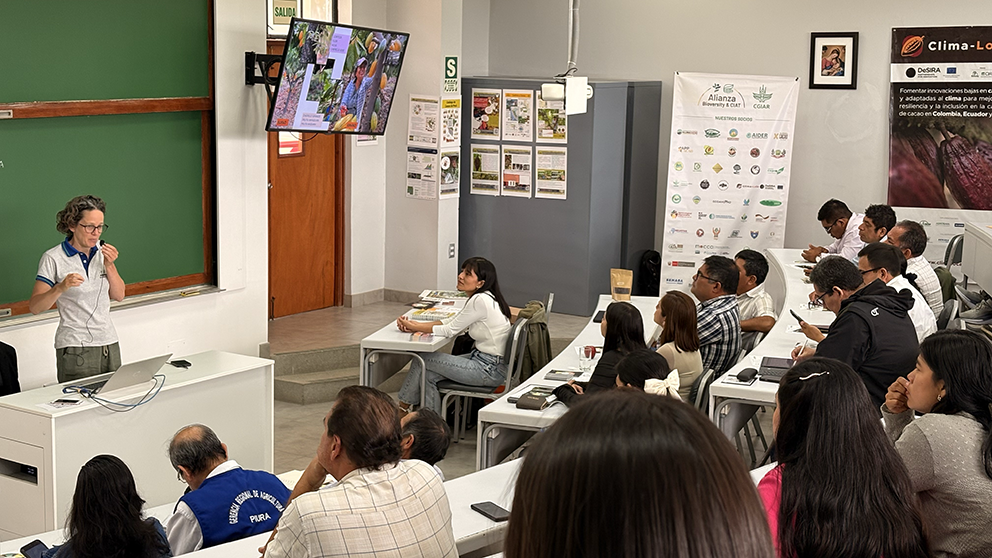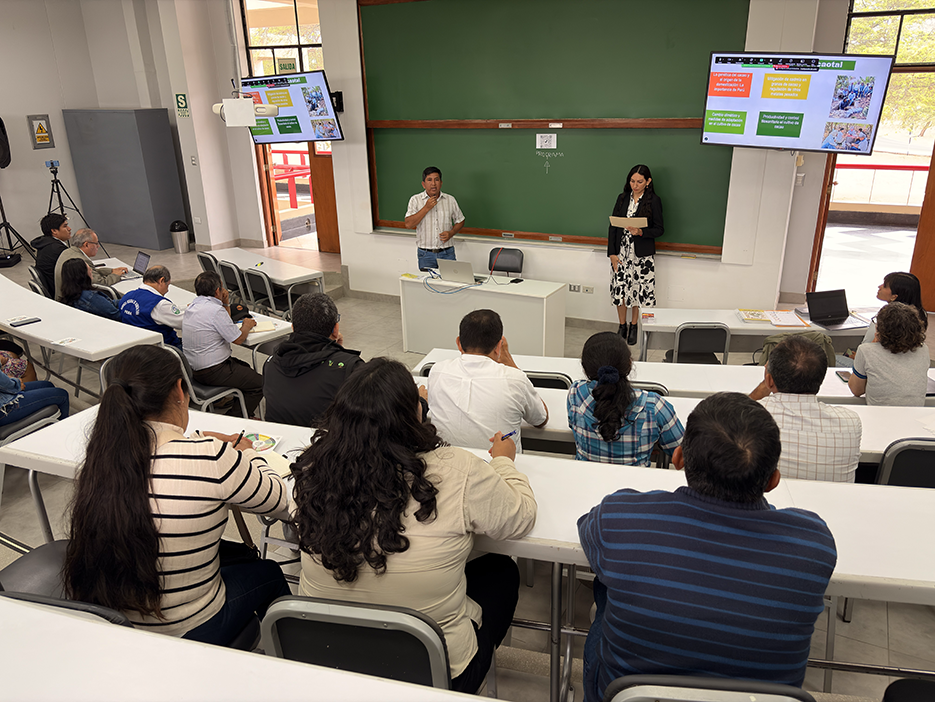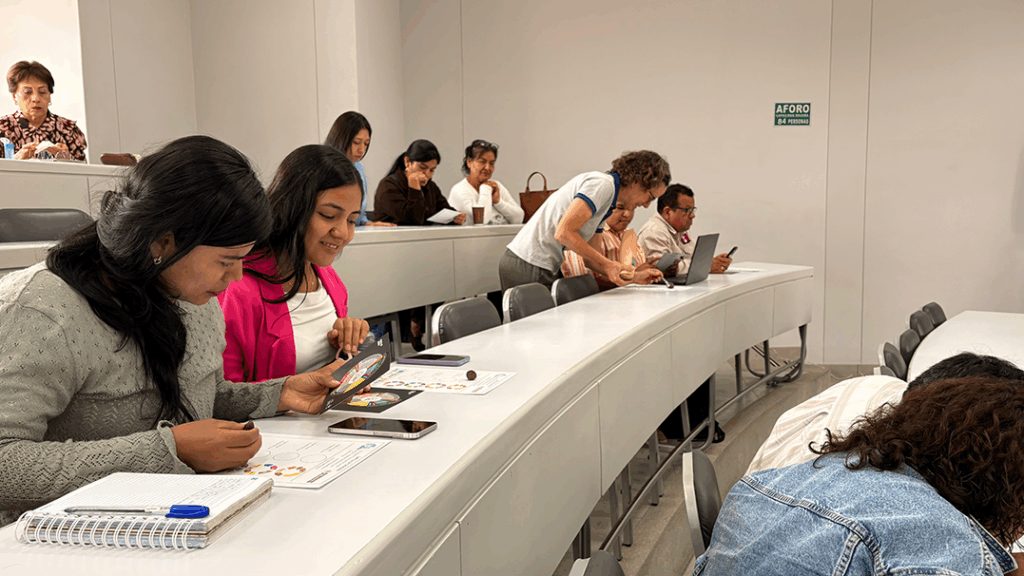The Regional Forum “Science for Cocoa,” held on August 7 in Piura, Peru, was a successful event that brought together more than 40 participants, including representatives from various institutions and leading producers in the cocoa sector. This forum stood out for promoting a space for scientific, technical, and productive exchange and integration, which is essential for driving the sustainable development of the cocoa value chain in the region.
Organized by the Regional Directorate of Agriculture of Piura (DRAP) through the Regional Technical Committee on Cocoa, the meeting served as a key platform for the presentation and discussion of scientific knowledge and technological advances in cocoa cultivation. The event served as a framework for the Alliance of Bioversity International and CIAT Peru team to present the results obtained during the implementation of the Clima-LoCa project, as well as other relevant initiatives in the area. Participating institutions included representatives from the University of Piura, CIPCA, NGO Progreso, Norandino Agricultural Cooperative, APPROCAP Cooperative, DIRCETUR, José María Arguedas La Quemazón Educational Institution, among others.

The main topics addressed during the forum included the genetic diversity of cocoa, an invaluable resource for crop resilience and improvement; the mitigation of cadmium and other heavy metals, a problem that affects the quality and safety of cocoa, with innovative proposals to overcome these challenges; as well as climate change and specific adaptation measures for this agro-industry, which is vulnerable to climate variations. Strategies were also presented to increase crop productivity and improve phytosanitary control, critical aspects for ensuring the health of plantations and the profitability of producers.

This meeting space not only allowed for the sharing of knowledge, but also strengthened institutional commitment to promoting the scaling up of the successful technologies and practices presented. It also reaffirmed the desire to strengthen cooperation in order to continue future research and generate a positive impact on the development of the cocoa sector in Piura and other related regions.
The University of Piura (UDEP by) played a prominent role by providing the modern facilities of the Chemistry Building, creating an environment conducive to scientific dialogue and networking among key actors. This institutional support contributed to the quality of the event and to the positioning of Piura as a regional center of reference in agricultural innovation.

The Clima-LoCa project, which has been working for five years to improve the cocoa production chain, continues to plan similar events and meetings. These activities seek to keep local actors informed about the most significant advances, promoting the adoption of good practices and adding value to the entire cocoa ecosystem, from cultivation to market.
In short, the Regional Forum “Science for Cocoa” was a significant milestone for agriculture in Piura and the national cocoa sector, demonstrating the potential for collaboration between institutions, researchers, and producers to address the current and future challenges of cocoa cultivation in the context of sustainability and climate change. This type of initiative strengthens the path towards more competitive, safe, and environmentally friendly production.
This success marks the beginning of a series of collective efforts that will undoubtedly contribute to consolidating Piura as a benchmark in high-quality cocoa research and development in Peru.

